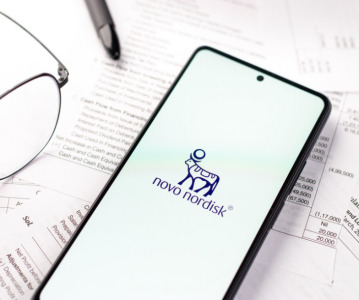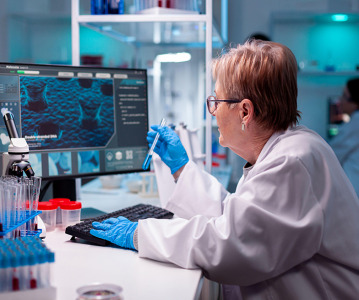Boxing clever: Smart packs improving communication with patients

Drug industry expectations of packaging are evolving with developers now seeking techs that help patients get more from their medicines.
Determining how best to package a pharmaceutical has always been a complex process. Choosing a material that does not interact with the drug in question is vital, as is selecting a packaging format that optimises shelf-life.
Likewise it has always been important for drug packaging to be able to display detailed information about the product along with safety information, often in multiple languages.
But in recent years the role played by pharmaceutical packaging has expanded according to Alex Cole from the UK Centre for Process Innovation (CPI), who told us “This space is really moving forward.”
Thinking outside the box
At the most basic level a “smart” packaging technology is one that facilitates the transfer of information. Any technology that is able to monitor the state of the product it contains can be considered smart.
Whether it be a tactile marking that provides the patient with information about the product -or a container that indicates on which day a dose should be taken, a smart packing system facilities communication.
However, packaging can do more than provide information in a passive manner. Modern technologies can communicate actively Cole says, citing industry interest in patient-centricity as the key development driver.
“Flexible hybrid electronics enable the embedding of intelligence into packaging or medical devices to make them smart and/or connected,” he said, adding that compliance is just one potential application.
“The approach can support patient adherence but also help them to manage polypharmacy [use of multiple medicines] and feed information back to careers or doctors.”
So called smart packaging can also play a preventative role, particularly when combined with other technologies and approaches like artificial intelligence and machine learning Cole says.
“We can use information from wearables, as well as connected/smart packaging, IVD tests on patients and also genomics to predict and prevent chronic conditions occurring.
“Smart packaging is the glue that holds this new digital patient support ecosystem together, if you don’t know that a patient is adhering then you don’t know anything about if your prescribed treatment is working,” he said.
Printed electronics
But to take packaging-based communication even further, new technology will be required.
According to Cole “There’s a real industry need to bring in printed electronics and flexible hybrid electronics to embed intelligence within packaging to make it lightweight, flexible and seamless.”
Efforts in this area are being made. The inclusion of printed electronics in pharmaceutical packaging was part of the REMEDIES project [1], a collaboration involving the CPI, GlaxoSmithKline, AstraZeneca and the Cambridge University Institute for Manufacturing [2].
Dr Jagjit Singh Srai, Head of Centre for International Manufacturing at the Institute for manufacturing at the University of Cambridge, told us printed electronics have a range of applications in the drug packaging space.
“This project successfully trialled the use of printed electronics to create smart labels that can monitor temperature, humidity and shocks, together with a time-stamp. The work involved a number of progressive developments, migrating from battery technologies through to the use of NFC technologies that provide data access and retrieval at selected points across the supply chain.
He added that, “Manufacturing equipment to produce these printed electronic labels at scale has been used to demonstrate the commercial feasibility of the technologies.”
Traceability
The opening up of new pharmaceutical markets combined with increased use of outsourced manufacturing has increased the complexity of distribution networks.
As a result, supply chain security has gained in importance, which is also impacting the pharmaceutical packaging sector Cole says.
“In Europe and the US there are regulations requiring anti-tamper and serialisation and this is driving a change in packaging, mainly through printed codes but also QR and potentially other technologies such as NFC and RFID.”
Smart packaging can help in the fight against counterfeits in a number of ways. For example, research [3] by Swiss drug firm Roche suggests that appropriately marked packs could help industry quickly find fakes.
Similar research [4] by a multi-University academic group indicates that smart packaging couple help expand the use of handheld NIR and Raman spectrophotometers for product authentication.
Smart choices
Smart packaging, as started above, has the potential to revolutionise the transport of medicines and boost patient adherence. However, it is important to understand that such technology is not suitable for every type of medicine.
For example most cell and gene therapies are packaged in liquid nitrogen-cooled enclosures that protect the therapies from the external environment.
For such delicate, often one-off products smart packaging may not be suitable according to Cole. He told us, “Call and gene therapies are still so high value that technical solutions based on conventional electronics are used.
“If your medicine is costing £500,000 a dose and is autologous [tailored for a patient] then it has to be delivered to the patient at the right time in the right condition. It has to, or that patient can seriously suffer. So why risk this with a new smart packaging innovation?”
Sustainability
There are also potential environment benefits of smart packaging technology.
Any reduction is wastage – resulting from losses during transportation or patients not taking medicines as prescribed – is likely to be positive from an environment standpoint.
According to Cole “The vast majority of the CO2 embedded energy in a medicines pack is from making the medicines. If only 50% of medicines are taken then by improving adherence you’re already reducing your environmental impact.
“Sustainability is one of the most important things for packaging companies and at CPI we’re tackling this right across the board from using fermentation processes to make new sustainably scoured polymers right through to adding electronics to packaging to support reuse or correct recycling channels,” he said.
The challenge for industry, Cole says, is to develop recyclable solutions that are cost effective. However, again smart packaging is likely to be part of the solution.
“We’re working on it through a number of ways including using carbon inks to make smart tags, developing thinner and less CO2 intensive electronics.”
Related News
-
News 2024 Pharma Industry Trends Outlook: Collaboration, Market Maturity, and Digital Futures
The annual CPHI Online 2024 Pharma Trends Outlook, in partnership with Arvato Systems, identifies 12 key industry trends shaping the life sciences industry in the coming year. -
News New Novo Nordisk AI hub for drug discovery to open in London, UK
Danish pharmaceutical giant Novo Nordisk will be opening an AI-based research facility in the heart of London to advance drug discovery operations. -
News Women in Pharma: Looking back on 2023 and moving forward to 2024
In this monthly series, we interview women from across the pharmaceutical industry and supply chain to discuss the importance of gender diversity in healthcare, the workplace, and beyond. -
News CPHI Barcelona 2023: Loading Potential – Artificial Intelligence for Pharma Manufacturing
During CPHI Barcelona 2023, insightful content sessions offered attendees the chance to explore trending topics with expert speakers and panellists. Here, we summarise what the pharma industry and supply chain are talking about the most. -
News On track at CPHI Barcelona - The Track Sponsor interview: Procaps
In our packed out content sessions at CPHI Barcelona this year we focus on some of the hottest topics coming up in the pharma industry, with each track sponsored by a leading expert in the field. -
News Your Prescription for Marketing Success: Digital Pharma Marketing Toolkit – Free eBook
Download your FREE pharma marketing eBook to learn why it is so important for pharmaceutical marketeers to develop their digital content marketing strategies in order to establish their companies as thought leaders and industry experts. -
News 3 ways ChatGPT will impact pharma marketing teams
What does the rise of AI-powered chatbots such as ChatGPT and GPT-4 mean for pharma marketeers? -
News Pharma needs ‘mindset change’ to unlock benefits of digitalisation – CPHI Frankfurt preview
For more information about digitalisation in pharma, register to attend CPHI Frankfurt 2022.
Position your company at the heart of the global Pharma industry with a CPHI Online membership
-
Your products and solutions visible to thousands of visitors within the largest Pharma marketplace
-
Generate high-quality, engaged leads for your business, all year round
-
Promote your business as the industry’s thought-leader by hosting your reports, brochures and videos within your profile
-
Your company’s profile boosted at all participating CPHI events
-
An easy-to-use platform with a detailed dashboard showing your leads and performance



.png)



